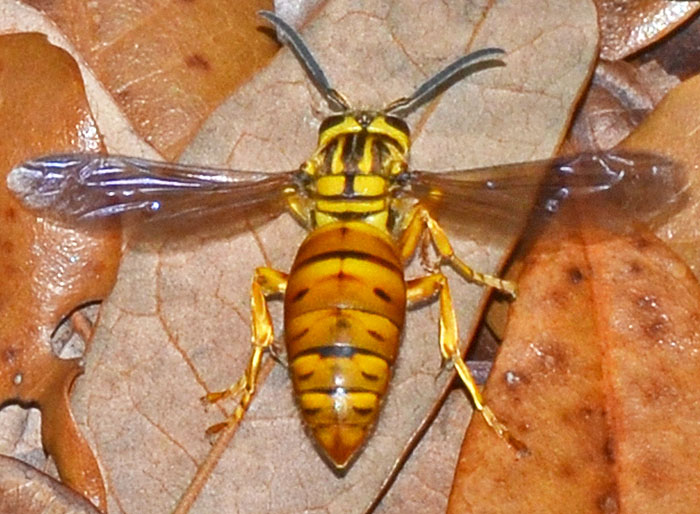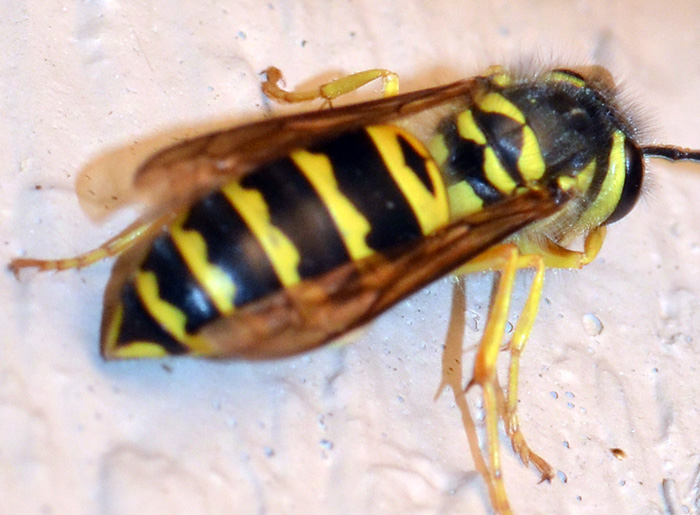 Vespula squamosa (Southern Yellowjacket). | The southern yellowjacket can be identified by its distinctive black and yellow patterns. This one is likely a queen (see UF link, Fig. 2). They create enormous, multiple-comb nests. One of the largest reported nests was 114 cm (45") in diameter. Their stings are venomous causing pain and workers can sting several times. On the upside, they also destroy many insects that otherwise attack cultivated and ornamental plants. bug guide (this photo): http://bugguide.net/node/view/1368650 wikipedia: https://en.wikipedia.org/wiki/Vespula_squamosa UF: http://edis.ifas.ufl.edu/in238 | |
 Vespula maculifrons (Eastern Yellowjacket). | Eastern yellowjackets aggressively defend their hives from threats and are known to inflict painful stings. Their colonies are normally subterranean, but sometimes at ground level in fallen logs or on buildings. In late summer, workers construct special larger cells to rear new queens. Males develop from unfertilized eggs and mate with the new queens, which then leave the natal colony to hibernate. The old colony declines and all remaining individuals perish.
bug guide (these photos): https://bugguide.net/node/view/1734206 |

